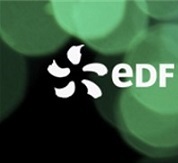A stochastic approach for the simulation of collisions between colloidal particles at large time steps
Résumé
This paper presents a new approach for the detection and treatment of colloidal particle collisions. It has been developed in the framework of Lagrangian approaches where a large number of particles is explicitly tracked. The key idea is to account for the continuous trajectories of both colliding partners during a time step that is not restricted. Unlike classical approaches which consider only the distances between a pair of particles at the beginning and at the end of each time step (or assume straight-line motion in between), we model the whole relative, and possibly diffusive, trajectory. The collision event is dealt with using the probability that the relative distance reaches a minimum threshold (equal to the sum of the two particle radii). In that sense, the present paper builds on the idea of a previous work. However, in this first work, the collision event was simulated with a simplified scheme where one of the collision partners was removed and re-inserted randomly within the simulation domain. Though usually applied, this treatment is limited to homogeneous situations. Here, an extension of the stochastic model is proposed to treat more rigorously the collision event via a suitable evaluation of the time and spatial location of the collision and an adequate calculation of subsequent particle motion. The resulting collision kernels are successfully compared to theoretical predictions in the case of particle diffusive motion. With these promising results, the feasibility of simulating the collisional regime over a whole range of particle sizes (even nanoscopic) and time steps (from a ballistic to a purely diffusive regime) with a numerical method of reasonable computational cost has been confirmed. The present approach thus appears as a good candidate for the simulation of the agglomeration phenomenon between particles also in complex non-homogeneous flows.

